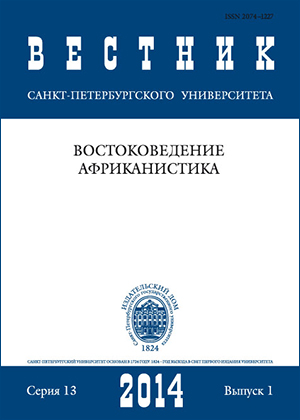Basic terms of the Tibetan grammatical tradition
Abstract
First Tibetan grammatical treatises mainly described phonology and grammar of the Tibetan language. Nevertheless it is not typical of the Tibetan grammatical tradition to emphasize such traditional for the Western linguistics subdisciplines as phonology, morphology and syntax. Basic terms of the Tibetan grammatical tradition — yi ge, ming, tshig and brjod pa denote basic units of different language levels. The article provides a general description of these four terms; describes their meanings within grammatical terminological field; points out their Sanscrit equivalents. The article also describes the use and interpretation of these terms by Tibetan grammarians. The article refers to the first Tibetan grammatical treatises “Sum cu pa” and “Rtags kyi ‘jug pa”, attributed to the adviser of the king Srong btsan sgam po (VII c.) — Thon mi Sambhoṭa, and some of their most important commentaries — “Mkhas mchog si tu’i zhal lung” of Dngul chu dharma bha dra (1722–1851), anonymous commentary “Sum rtags gzhung mchan legs bshad nor bu’i phreng ba” (XVIII/XIX cc.), “Bod kyi brda sprod rig pa’i khrid rgyun rab gsal me long” of Skal bzang ‘gyur med and some other works. Refs 10. Figs 2. Tables 1.
Keywords:
history of linguistics, the Tibetan language, the Tibetan linguistic tradition, Tibetan grammatical terminology
Downloads
References
Downloads
Published
How to Cite
Issue
Section
License
Articles of "Vestnik of Saint Petersburg University. Asian and African Studies" are open access distributed under the terms of the License Agreement with Saint Petersburg State University, which permits to the authors unrestricted distribution and self-archiving free of charge.





